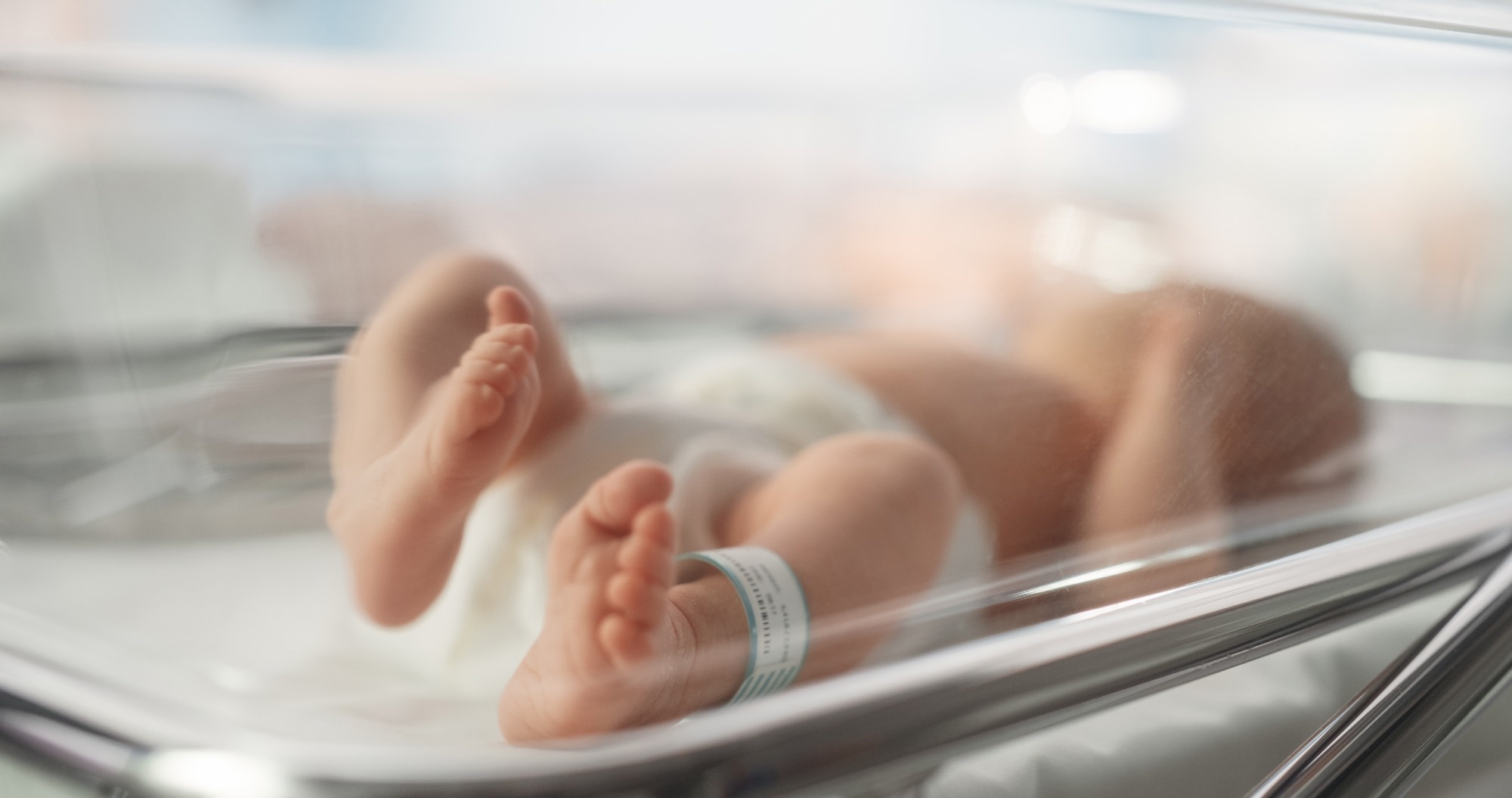In a recent study published in Nature Communications, researchers investigate the risk of respiratory distress (RD) in neonates born to mothers with severe acute respiratory syndrome coronavirus 2 (SARS-CoV-2) infection.
Study: Respiratory distress in SARS-CoV-2 exposed uninfected neonates followed in the COVID Outcomes in Mother-Infant Pairs (COMP) Study. Image Credit: Gorodenkoff / Shutterstock.com
How are infants affected by maternal SARS-CoV-2 infection?
SARS-CoV-2 infection during pregnancy can lead to serious maternal and neonatal complications, including stillbirth, prematurity, and severe maternal health issues. Low rates of mother-to-child transmission have been reported; however, concerns about long-term effects on neonates persist.
Notably, RD has been observed in uninfected and SARS-CoV-2-exposed full-term neonates. Previous explanations focused on maternal health issues leading to premature birth, a known RD risk factor. However, new insights suggest that prenatal exposure might trigger an inflammatory response in the newborn’s airways, as indicated by specific proteins found in affected infants.
The role of maternal coronavirus disease 2019 (COVID-19) vaccination in preventing neonatal RD post-exposure remains unclear. Thus, additional research is needed to elucidate the mechanisms by which prenatal SARS-CoV-2 exposure leads to RD in neonates and explore potential preventative strategies.
About the study
In the present study, participants aged 16 and older were recruited from the Department of Obstetrics at the University of California, Los Angeles (UCLA) between April 15, 2020, and August 31, 2022. All women admitted for labor and delivery at UCLA during this period were screened for SARS-CoV-2.
The study included 221 pregnant individuals and 227 exposed fetuses, which resulted in 199 live births. These maternal-infant pairs were monitored until the infants reached six months of age. Informed consent was obtained from all participants or surrogate decision-makers in cases of incapacity.
The researchers measured neonatal RD using criteria like respiratory rate and cyanosis, with infants classified as premature if born before 37 weeks. Maternal COVID-19 severity and vaccination status were assessed, alongside self-reported race and ethnicity.
Statistical analyses compared the demographics of infants with and without RD, including maternal and infant characteristics and pregnancy complications. Logistic regression analyses identified maternal vaccination and prematurity as key predictors of RD, with a post-hoc analysis evaluating the impact of vaccination on perinatal outcomes.
In addition to statistical analysis, the researchers performed proteomic profiling to explore associations between RD and SARS-CoV-2 in a subset of infants. This involved analyzing blood specimens from 52 infants, in which 45 SARS-CoV-2 exposed uninfected (SEU) infants were compared with seven control infants born to unexposed healthy mothers. SEU infants were clustered based on RD outcome and gestational age for this analysis.
Study findings
About 50% of study participants identified as Black or Hispanic, followed by 24% identifying as Asian, mixed-race, or other, and 25% identifying as White. About 13% of the study participants experienced severe or critical COVID-19, with a higher incidence reported among unvaccinated mothers.
The highest number of COVID-19 cases in the cohort occurred in the winter of 2020, followed by smaller peaks coinciding with the emergence of the Delta and Omicron SARS-CoV-2 variants. Most mothers were vaccinated before the Alpha variant became prevalent, which led to a significant difference in maternal vaccination status across different viral variants. Notably, none of the infants tested positive for SARS-CoV-2 at birth; however, 17% were diagnosed with RD.
Among the 34 infants with RD, the most common diagnoses upon discharge from neonatal intensive care were respiratory distress syndrome (RDS), transient tachypnea of the newborn, and other infections at 47%, 16%, and 16%, respectively. While many infants were considered early preterm, as they were born at less than 34 weeks of gestation, most were late preterm or term deliveries. The average time for RD resolution was about 24 days, with the duration varying by gestational age.
Physical examination findings were nonspecific and included symptoms like subcostal or intercostal retractions, abnormal respirations, or grunting. Chest X-ray findings commonly showed opacifications, such as interstitial opacities and ground glass opacities; however, 8% were described as normal.
Unadjusted logistic regression models identified associations between neonatal RD with maternal disease severity, prematurity, and the absence of maternal COVID-19 immunization. In the proteomic pathway analysis, 52 infants born during the first pandemic year were studied.
Among SEU infants with RD, elevated levels of various cytokines and proteins were observed, thus indicating an upregulated NACHT, leucine-rich repeats (LRR), and pyrin domain (PYD)-containing protein 3 (NLRP3) inflammasome-mediated pathway. This included higher levels of specific cytokines like interleukin 18 (IL-18), caspase 1 (CASP1), and interleukin 1 β (IL-1β).
Significant upregulation in biological processes related to inflammation, chemotactic responses, and IL-8 production was observed in preterm infants with RD. The functional networks analysis suggested a predominantly T helper type 2 cells (Th2)-skewed response, potentially moving towards hyperimmune responses due to associations with higher Immunoglobulin E (IgE) production.
Journal reference:
- Man, O.M., Azamor, T., Cambou, M.C. et al. (2024). Respiratory distress in SARS-CoV-2 exposed uninfected neonates followed in the COVID Outcomes in Mother-Infant Pairs (COMP) Study. Nature Communications. doi:10.1038/s41467-023-44549-5
